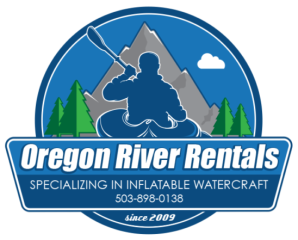Frequently Asked Questions
-
We hope that cancellations don’t happen but we understand that things arise that are beyond your control. For this reason, our cancellation policy is not as strict as other operations and we’ve tried to be as lenient as possible. However, over the years, last-second cancellations have become more common and have required us to enforce a policy for these occasions. We ask that you inform us via phone call or text as soon as you know that you’ll need to cancel. Cancellations made via email will not be accepted. This policy is effective on all of our kayaks, rafts, paddleboards, float tubes, and cargo boxes. Please review our cancellation policy below and let us know if you have any questions.
Oregon River Rentals Cancellation Policy – Effective 2018
By cancelling your reservation with less than 24 hours’ notice, the renter will incur a 30% withholding of the rental fee portion of the reservation.
By cancelling your reservation with less than 2 hours’ notice, the renter will incur a 100% withholding of the rental fee portion of the reservation.
The security deposit fee portion of the reservation will be refunded in full with any cancellation.
For example:
Reservation made for 1 tomcat tandem
Rental fee = $40
Security deposit = $300
Cancellation under 24 hours = $12 withheld
Cancellation under 2 hours = $40 withheld
Security deposit = $0 withheld -
It’s pretty simple. Check our availability online, see if we have an opening simply go through the reservation process online. Once the reservation is placed, we’ll get an email notifying us that the reservation has been placed. We’ll then shoot you an email to confirm and then arrange a time for pickup.
-
Once all the gear is returned in good condition, we’ll issue a refund for the security deposit portion of your reservation. We issue the refund the same day the gear is returned but it may take several days for it to process through you individual banking institution.
-
Kayakers use the term IK as the abbreviation for ‘inflatable kayak’. Often they forget that others might not be familiar with the term. But now you know, so there won’t be any more confusion.
-
On an inflatable kayak, there is no cockpit. You sit in a secured seat on top of an inflatable floor. This keeps you higher than you’d be in a hard shell kayak and allows you to exit the boat much easier.
-
One of the beauties of inflatable kayaks in whitewater models is the self-bailing feature. In whitewater kayaks, there are ports in the bottom of the boat so that when water enters, it’s quickly displaced out of the boat. This allows you to take on water without swamping the boat and taking a swim.
-
Inflatable kayaks range in weight depending on the material used and if it’s a tandem or solo version. Our kayaks range from 25-60 lbs, not including gear. Tomcat solos and both Airhead models can generally be carried by one person while the Tomcat tandem usually requires an assistant.
-
Pumping up an inflatable kayak doesn’t take as long as you might think. Most of the boats we carry can be inflated in 10 minutes. Tomcat kayaks require a specific valve adapter for your pump. Simply insert it into the valve and give it a 1/4 turn. to release the air simply push and 1/4 turn the relief valve. Check out the video on specific product pages to see how this works.
-
The IK’s that we use at Oregon River Rentals is very strong, and in the case of a bump into a rock, normally you will simply bounce right off and continue on your way. At the same time, they are inflatable, and scraping along jagged rocks will puncture and tear the tube so avoiding rocks is always best if possible.
-
Inflatable kayaks can carry a lot of weight but at the same time, there are limits. On each individual boat description page we note the capacity limits for each boat. Keep in mind that a tandem kayak that has a higher capacity can be used as a solo simply by reconfiguring the seat location.
-
Hardshell kayaks have the advantage when it comes to speed and maneuverability however, inflatable kayaks do a great job getting you where you want to go. The V shape design of the bottom of the Tomcat models keep the boat going straight when you want it to and allow you to turn on a dime with a quick stroke of the paddle. The Airhead models have attached skegs on the bottom to keep you from going in circles.
-
Tomcat kayaks have what’s called a “flip strap” that goes around the entire body of the boat and allows you to pull and flip your boat back upright when the bottom’s up. Re-entry does require you to be able to pull your own bodyweight out of the water and back into the kayak but it’s definitely possible and best to practice this maneuver
-
Rivers are cold here in the Northwest even when it’s 90 degrees outside. When tackling rivers that you anticipate getting engulfed with water on, we recommend wearing a wetsuit. We also always recommend wearing a helmet whenever going kayaking. Helmets are included in any of our whitewater boat rentals and there are several shops in the area that rent wetsuits.
-
Inflatable kayaks are much easier to transport than hard-shell counterparts. Most models can fit easily in the trunk of your car. The paddles are two pieces that snap together easily. You probably can’t stick it into a backpack and trek off into the wilderness alone, but compared to traditional kayaks, they take up very little space.
